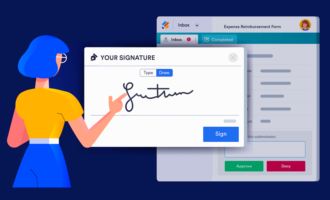Hair dryers that scorch your strands. Expensive workflow software. Tights that rip the first time you wear them. These are what you might call “boring” problems. While many aspiring founders want to create splashy products built on emerging technologies like blockchain, AI, NFT, or GPT-3, innovation also stems from tackling mundane challenges.
Back in 2006, I wanted an easier way to make web forms. I had been working at a New York media company where editors often needed custom forms for surveys, quizzes, reader feedback, and more. The forms were tedious and time-consuming to code — and that’s where I got the idea for JotForm.
I knew it wasn’t an overtly cool product, like Instagram or a Tesla Model S. I also knew that web forms wouldn’t land me on the cover of a magazine. But most importantly, I knew from personal experience that people needed what I was building.
Bleeding-edge technologies are sexy, because they stretch the limits of what’s possible. They spark our imaginations and get investors talking. Yet, as we move through our days, we encounter countless moments of friction, from messy toothpaste tubes to Bluetooth connectivity issues. Boring problems like these are ripe for innovation. Crush a common frustration and you’ll never run out of great product and feature ideas.
Jotform eliminates a friction point (the need for custom web forms) that I experienced firsthand during the five years I spent at my job. It’s not space travel, but we have more than 9.1 million happy users.
Whether you’re seeking fresh inspiration or enhancing an existing product, here are three ways to use everyday friction as a source of innovation.
1. Use your specific expertise to innovate
In 1993, Dyson introduced a bagless vacuum cleaner that separates dust from air using centrifugal forces. The company now has over 12,000 employees and earns $7.3 billion in annual revenues. Dyson has also extended its product line to include hand dryers, desk fans, air purifiers, and more. All of these products spring from the company’s specialized understanding of air movement.
In 2016, Dyson released the Supersonic Hair Dryer. It measures air temperature 40 times per second to prevent heat damage and took 103 engineers over four years to develop, which might explain its nearly $400 price tag.
Two years later, Dyson unveiled the Airwrap, which uses airflow, instead of extreme heat, to grab and curl hair. The Airwrap sells for nearly $550 and had a waitlist of over 100,000 people when it sold out in late 2018. Dyson continues to solve overlooked problems with profitable solutions. They keep finding new ways to apply their deep knowledge of airflow, and gain new customers along the way.
Take our latest product, Jotform Approvals (later rebranded as Jotform Workflows), which eliminates the cost and complexity of building workflows that begin with an approval request. We understand web forms, and how they fit into business processes and workflows. Jotform Workflows automates all the steps that are triggered when a form is submitted. Users drag and drop workflow objects to create a flowchart, then add approvals, emails, and if/then conditions. A wide variety of organizations could benefit from this solution, but we know that many users will work in HR, finance, education, IT, and non-profit sectors.
2. Revamp the category
Anyone who wears tights knows they snag at the mere sight of a sharp fingernail or dog claw. For decades, hosiery was considered a disposable product that would last just a couple wears. Determined to create truly untearable tights, Sheertex founder and CEO Katherine Homuth and her team developed a proprietary knit that’s unbreakable in human hands.
By changing the category rules, Sheertex can charge around $100 for just one pair of indestructible tights. The company has also raised a total of $44.3 million in funding from investors, including the venture capital arm of Swedish fashion brand H&M.
Snagged tights are another problem we’ve simply accepted in our day-to-day lives. No one knew they needed long-lasting hosiery until Homuth created Sheertex — which also means the company has to educate buyers who are used to cheap, disposable pantyhose.
3. Watch how people hack your product
No matter how carefully you plan and build something, users will adapt it to fit their needs. IKEAhackers, for example, features DIY instructions for modifying IKEA products from people around the world. IKEA sells the IDEALISK to grate cheese, but in the hands of a creative hacker, it quickly becomes a lamp.
Similarly, we can’t take full credit for Jotform Workflows. The idea came from seeing users hack our features to build workflows based on form submissions. We knew they needed an easy way to automate approval processes for activities like employee onboarding, expense reporting, vacation approvals, financial aid applications, purchase orders, and more.
Just as you listen to customer feedback and internal brainstorms, try to watch what’s happening behind the curtains. Exploring the unintended ways people use your product can uncover fascinating insights and ultimately, grow your business. Opportunities for innovation are everywhere.
After starting my journey with web forms 15 years ago, I’m happy to share one more secret: there are no boring problems. Creating something that people want and need; something that makes their day a little better, and that helps them work more productively, is an ongoing challenge I’m excited to tackle every day — and I know our team feels the same way.
















Send Comment: